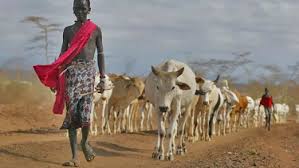Biogenetic Variations Of Indian Tribes – Anthropolgy Notes – For W.B.C.S. Examination.
ভারতীয় উপজাতির জৈবজাতীয় বিভিন্নতা – নৃবিজ্ঞান নোট – WBCS পরীক্ষা।
How is diversity created? In the process of inheritance, nucleotides (although not always whole genes) are shuffled and recombined to form new combinations that are different than the parents. Every individual is a unique combination of alleles from its parents (unless it has been clonally propagated from just one parent; see box on cloning).Continue Reading Biogenetic Variations Of Indian Tribes – Anthropolgy Notes – For W.B.C.S. Examination.
In addition, other events can create new variation in the DNA sequences. Mutations are changes to one or more nucleotides in the DNA sequence. They are caused by mutagens such as radiation (including ultraviolet radiation from the sun) or chemicals, or simply by mistakes during DNA replication. Mutations in somatic cells (nonreproductive cells) can cause problems, such as cancer, in an organism but are not heritable. Mutations in reproductive cells (gametes) are inherited by the progeny. These changes in the DNA sequence can be beneficial, detrimental (more often), or neutral. If they are beneficial they are more likely to be passed on to new generations, creating new genetic variation in the population.
Genetic diversity is important because it helps maintain the health of a population, by including alleles that may be valuable in resisting diseases, pests and other stresses. Maintaining diversity gives the population a buffer against change, providing the flexibility to adapt. If the environment changes, a population that has a higher variability of alleles will be better able to evolve to adapt to the new environment. In extreme situations (e.g. drought, disease epidemics) diversity could even mean the survival of the population.
Unfortunately, the process of domestication tends to decrease the genetic diversity of selected crop species, due in part to the genetic bottleneck imposed when only a few plants are selected and propagated. In addition, consumers tend to prefer uniformity – think of the rows of perfectly round, red apples we see in the supermarket. In nature, this is not a healthy situation. If anything unusual happens, such as a disease or environmental condition (e.g., a drought), there might not be any plants in the population that carry genes for responding to this new threat.
Variation, in biology, any difference between cells, individual organisms, or groups of organisms of any species caused either by genetic differences (genotypic variation) or by the effect of environmental factors on the expression of the genetic potentials (phenotypic variation). Variation may be shown in physical appearance, metabolism, fertility, mode of reproduction, behaviour, learning and mental ability, and other obvious or measurable characters.
Genotypic variations are caused by differences in number or structure of chromosomes or by differences in the genes carried by the chromosomes. Eye colour, body form, and disease resistance are genotypic variations. Individuals with multiple sets of chromosomes are called polyploid; many common plants have two or more times the normal number of chromosomes, and new species may arise by this type of variation. A variation cannot be identified as genotypic by observation of the organism; breeding experiments must be performed under controlled environmental conditions to determine whether or not the alteration is inheritable.
Environmentally caused variations may result from one factor or the combined effects of several factors, such as climate, food supply, and actions of other organisms. Phenotypic variations also include stages in an organism’s life cycle and seasonal variations in an individual. These variations do not involve any hereditary alteration and in general are not transmitted to future generations; consequently, they are not significant in the process of evolution.Variations are classified either as continuous, or quantitative (smoothly grading between two extremes, with the majority of individuals at the centre, as height in human populations); or as discontinuous, or qualitative (composed of well-defined classes, as blood groups in man). A discontinuous variation with several classes, none of which is very small, is known as a polymorphic variation. The separation of most higher organisms into males and females and the occurrence of several forms of a butterfly of the same species, each coloured to blend with a different vegetation, are examples of polymorphic variation.
Our own publications are available at our webstore (click here).
For Guidance of WBCS (Exe.) Etc. Preliminary , Main Exam and Interview, Study Mat, Mock Test, Guided by WBCS Gr A Officers , Online and Classroom, Call 9674493673, or mail us at – mailus@wbcsmadeeasy.in
Visit our you tube channel WBCSMadeEasy™ You tube Channel
Please subscribe here to get all future updates on this post/page/category/website



 Toll Free 1800 572 9282
Toll Free 1800 572 9282  mailus@wbcsmadeeasy.in
mailus@wbcsmadeeasy.in


















































































































